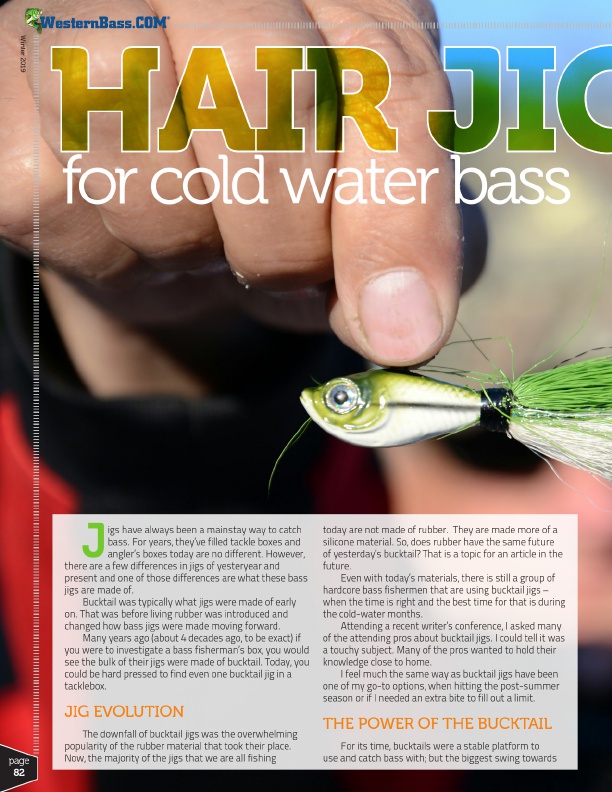
®
H A I R J I G
for cold water bass
Winter 2019
page 82
J
igs have always been a mainstay way to catch
bass. For years, they’ve filled tackle boxes and
angler’s boxes today are no different. However, there are a few differences in jigs of yesteryear and
present and one of those differences are what these bass
jigs are made of.
Bucktail was typically what jigs were made of early
on. That was before living rubber was introduced and
changed how bass jigs were made moving forward.
Many years ago (about 4 decades ago, to be exact) if
you were to investigate a bass fisherman’s box, you would
see the bulk of their jigs were made of bucktail. Today, you
could be hard pressed to find even one bucktail jig in a
tacklebox.
JIG EVOLUTION
The downfall of bucktail jigs was the overwhelming popularity of the rubber material that took their place. Now, the majority of the jigs that we are all fishing
today are not made of rubber. They are made more of a silicone material. So, does rubber have the same future of yesterday’s bucktail? That is a topic for an article in the future.
Even with today’s materials, there is still a group of hardcore bass fishermen that are using bucktail jigs – when the time is right and the best time for that is during the cold-water months.
Attending a recent writer’s conference, I asked many of the attending pros about bucktail jigs. I could tell it was a touchy subject. Many of the pros wanted to hold their knowledge close to home.
I feel much the same way as bucktail jigs have been one of my go-to options, when hitting the post-summer season or if I needed an extra bite to fill out a limit.
THE POWER OF THE BUCKTAIL
For its time, bucktails were a stable platform to use and catch bass with; but the biggest swing towards